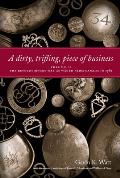

|
 |
Battle of Eutaw Springs, South Carolina |
|
Battle of Eutaw Springs. Click to enlarge. One of the bloodiest actions of the war could not have come at a worse moment for the tired ragtag army under the command of Lieutenant Colonel Alexander STEWART. Worn out by a fruitless summer of setbacks and hot marches, the remains of the British Army outside of Charlestown had stopped at this outpost to refresh themselves and gather provisions. Completely unaware of a large force of Continentals and militia with artillery and cavalry under the command of Major General Nathanael Greene, STEWART sent out of camp over three hundred officers and men to gather root vegetables. On the morning of September 8th Greene’s Army drove in the British pickets and captured scores of foragers. The British and Provincial line hastily fell in but was thrown back through their camp. The veterans of Isaac ALLEN’s New Jersey Volunteers, John Harris CRUGER’s DeLancey’s Brigade melted away under the onslaught. The detachments of the Royal Highland Emigrants and Provincial Light Infantry had officers and men dropping almost by the minute. As the line retreated, and retreated again, only two groups held- the British Grenadiers and Light Infantry under Major MAJORIBANKS and the infantry of the New York Volunteers commanded by Major Henry F. SHERIDAN. The Flank Companies under MAJORIBANKS held a thicket on the right flank which repulsed repeated attacks of cavalry and infantry, even bringing down and capturing the famous Colonel William Washington of the 3rd Continental Light Dragoons. Major SHERIDAN took his New Yorkers into a stone house which dominated the field, and which is pictured in the above illustration. By a well directed fire, SHERIDAN’s men picked off the artillery crews of four cannon trained against them, as well as numerous officers trying to bring order to the Rebel forces which had taken to plundering the British camp. By their valiant efforts, Lieutenant Colonel STEWART was able to rally the rest of the army and return to the fight. This time it was the Rebels’ turn to retreat, leaving behind them two of their cannon and several dozen prisoners. A small detachment of South Carolina and New York cavalry under Brevet Major John COFFIN was unable to vigorously pursue, being too weak in numbers. When the smoke cleared, nine hundred and fifty men were dead and wounded between the two armies. A further three hundred had been taken prisoner, the vast majority British and Loyalists. While the above illustration is not strictly correct in terms of clothing accuracy, it certainly portrays well the terrible carnage of the battle and the stone house that helped save the day for the British. An interesting anecdote involving that part of the battle is described by Dr. William Johnston ALMON, grandson of Captain William M. JOHNSTON of the New York Volunteers. Rarely do we hear of the individual exploits (or weaknesses) of individual private soldiers. This story, passed down through the JOHNSTON family, was published in Recollections of a Georgia Loyalist being the memoirs of Elizabeth Lichtenstein JOHNSTON, published by The Bankside Press (New York) in 1901. Doctor Almon relates the incident thus: “I may mention an incident connected with the defence of this stone house, exemplifying the effect of a panic upon a brave man, which was related by Captain JOHNSTON to his daughter, my mother. There is no way to positively ascertain what the soldier meant by saying he was a “marked man” but it may be an allusion to his being a deserter from the Rebels.
Click here for ---> Battles & Campaigns Main Page
A Dirty, Trifling, Piece of Business Volume I: The Revolutionary War as Waged from Canada in 1781
 by Gavin K. WattTrade Paperback by Gavin K. WattTrade PaperbackThe On-Line Institute for Advanced Loyalist Studies Copyright Restrictions Document Formatting Optimal Viewing |